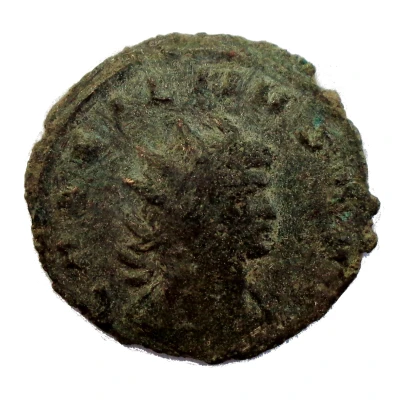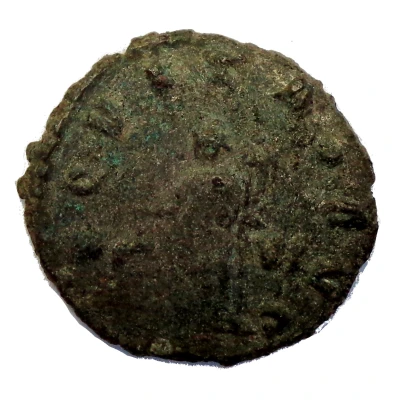Antoninianus - Gallienus P M TR P X COS IIII P P
| Silver | - | - |
| Issuer | Rome › Roman Empire (27 BC - 395 AD) |
|---|---|
| Emperor | Gallienus (Publius Licinius Egnatius Gallienus) (253-268) |
| Type | Standard circulation coin |
| Years | 262-268 |
| Value | Antoninianus (1) |
| Currency | Antoninianus, Reform of Caracalla (AD 215 – 301) |
| Composition | Silver |
| Shape | Round (irregular) |
| Technique | Hammered |
| Demonetized | Yes |
| Updated | 2024-10-05 |
| Numista | N#288587 |
|---|---|
| Rarity index | 100% |
Reverse
Gallienus, standing in quadriga left, holding sceptre.
Script: Latin
Lettering: P M TR P X COS IIII P P
Translation:
Pontifex Maximus, Tribunicia Potestate Decima, Consul Quartum, Pater Patriae.
High priest, holder of tribunician power for the tenth time, consul for the fourth time, father of the nation.
Comment
Source:Online Coins of the Roman Empire (OCRE)
Interesting fact
The Antoninianus coin was issued during the reign of Gallienus, who was the Roman Emperor from 260 to 268 AD. During his reign, the Roman Empire was facing numerous challenges, including invasions by barbarian tribes and internal conflicts. Despite these challenges, Gallienus was able to maintain the empire's stability and issue coins like the Antoninianus, which were used for trade and commerce throughout the empire. It's worth noting that the coin's design and inscriptions reflect the political and religious beliefs of the time. For example, the coin's obverse (front side) features an image of Gallienus wearing a radiate crown, which symbolized his divine status as a Roman emperor. The coin's reverse (back side) features an image of the goddess Roma, who represented the city of Rome and the Roman state. The inscriptions on the coin also highlight Gallienus' titles and accomplishments, such as his appointment as Consul for the fourth time. Overall, the Antoninianus coin is a fascinating piece of history that provides insight into the political, social, and economic conditions of the Roman Empire during the 3rd century AD.

